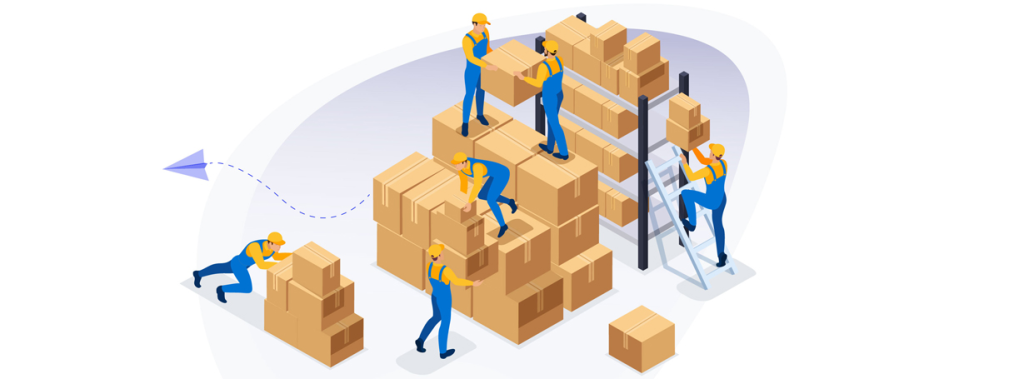Improving Multi-Location Inventory Management with Logistics Technologies
Managing inventory across multiple locations is one of the most complex challenges in modern logistics. As businesses expand regionally or globally, they face increased pressure to maintain optimal stock levels in each warehouse, distribution center, or retail outlet while ensuring high customer service. Fortunately, advances in logistics technology are transforming how companies handle multi-location inventory management, leading to greater efficiency, reduced costs, and improved customer satisfaction.

1. The Challenges of Multi-Location Inventory Management
Before exploring solutions, it is important to understand why managing inventory across multiple locations is so difficult:
- Lack of visibility: Without real-time data, businesses struggle to know the exact stock levels at each location, leading to stockouts or overstocking.
- Inconsistent demand forecasting: Demand varies by region, making it difficult to plan inventory accurately for each warehouse.
- Complicated transfers: Moving stock between locations to balance inventory levels is operationally challenging and costly without effective planning.
- Data silos: Multiple systems or manual spreadsheets make it hard to integrate inventory data across locations for decision-making.
These issues can result in lost sales, high carrying costs, and dissatisfied customers.
2. How Logistics Technology is Transforming Multi-Location Inventory Management
Real-Time Inventory Visibility with IoT and Cloud Platforms

Modern logistics platforms integrate warehouse management systems (WMS), transport management systems (TMS), and ERP solutions to centralize inventory data across all locations. Using IoT sensors, barcode scanning, and RFID technology, businesses can track stock levels, item movements, and warehouse utilization in real-time.
For example, a retail company with five warehouses across different states can now view consolidated inventory levels through a single cloud-based dashboard. This real-time visibility enables managers to:
- Identify low-stock items instantly
- Reallocate stock proactively between locations
- Avoid emergency purchases or rushed shipments
Advanced Demand Forecasting with AI and Analytics
Demand varies significantly across different geographic regions. AI-powered demand forecasting tools use historical sales data, market trends, seasonality, and external factors such as local events or weather to accurately predict demand for each location.
It ensures that each warehouse or store carries enough inventory to meet customer needs without overstocking, improving cash flow, and reducing storage costs.
Automated Replenishment and Inventory Transfers

Logistics technology also streamlines inventory transfers between locations. Advanced inventory management systems can set automatic replenishment triggers when stock levels fall below predefined thresholds at any site. The system recommends transferring orders from the nearest location with surplus inventory, minimizing transport costs and lead times.
For example, suppose Warehouse A in Chicago is overstocked on a product while Warehouse B in New York is understocked. In that case, the system generates a transfer order rather than suggesting a new purchase order, saving procurement costs.
Centralized Data for Better Decision-Making
Cloud-based logistics solutions eliminate data silos by integrating inventory information from all locations into a single platform. It allows for:
- Easier reporting and auditing
- Better coordination between procurement, sales, and operations teams
- Strategic planning for promotions or product launches
Centralized data also enables real-time alerts for discrepancies, preventing stock inaccuracies that can lead to lost sales or excess carrying costs.
Integration with Last-Mile Delivery Systems

Managing multi-location inventory is not just about warehouses but also involves last-mile delivery performance. Modern logistics technology integrates inventory systems with delivery management platforms to:
- Allocate orders to the nearest warehouse with available stock
- Reduce delivery times and shipping costs
- Improve customer satisfaction with faster and more accurate deliveries
It is particularly important for e-commerce businesses offering same-day or next-day delivery across different regions. Ecommerce businesses offering same-day or next-day delivery across different regions.
3. PostalParcel’s Logistics Service Case: Real-Time Inventory Management Across Multiple Locations
One prime example of how logistics technology can improve multi-location inventory management is PostalParcel, a logistics platform specializing in flexible fulfillment solutions for cross-border businesses.
PostalParcel operates a network of warehouses across various regions, handling inventory for multiple e-commerce sellers. The company uses an integrated system leveraging real-time inventory tracking and cloud-based software to optimize its operations. Using IoT sensors and RFID technology, PostalParcel can track inventory at every step — from receiving goods to shipping them out for delivery.

How PostalParcel Benefits from Logistics Technology:
- Real-Time Inventory Synchronization: PostalParcel’s system integrates data from all its warehouses, allowing managers to see an up-to-date inventory status at any location, even for cross-border shipments. It reduces the need for manual inventory checks and improves accuracy.
- Automated Inventory Replenishment: When inventory at one warehouse dips below a certain threshold, the system automatically triggers a replenishment order from another warehouse or the supplier, ensuring consistent stock levels and preventing stockouts.
- Dynamic Allocation: PostalParcel’s platform dynamically allocates orders to the nearest warehouse with sufficient stock. Doing so reduces shipping times and costs, resulting in faster delivery to customers.
- Efficient Cross-Border Inventory Transfers: The platform also enables efficient inventory transfers between warehouses in different countries, ensuring that inventory is available in the right location without causing delays in shipping.
Using logistics technology, PostalParcel successfully manages multi-location inventory, improves operational efficiency, and enhances customer satisfaction through faster, more reliable deliveries.
4. Future Trends in Multi-Location Inventory Management

Looking ahead, emerging technologies will further improve multi-location inventory management:
- Blockchain for secure, transparent, and tamper-proof inventory records across supply chain partners.
- Autonomous drones and robots will conduct real-time stock audits across large warehouses.
- Machine learning optimization algorithms to dynamically adjust inventory levels based on live sales and market changes.
These technologies will continue to reduce human error, optimize stock levels, and enhance operational agility for companies managing complex multi-location supply chains.
5. Conclusion
Managing inventory across different locations is key to running your business efficiently, reducing costs, and keeping customers happy. New logistics technologies like real-time tracking, AI forecasting, automated restocking, and cloud systems help businesses solve the usual problems of managing inventory in many places. By using these tools, companies can stay competitive in today’s fast-paced market and build strong, customer-focused supply chains for the future.
Industry Insights
news via inbox
Nulla turp dis cursus. Integer liberos euismod pretium faucibua








